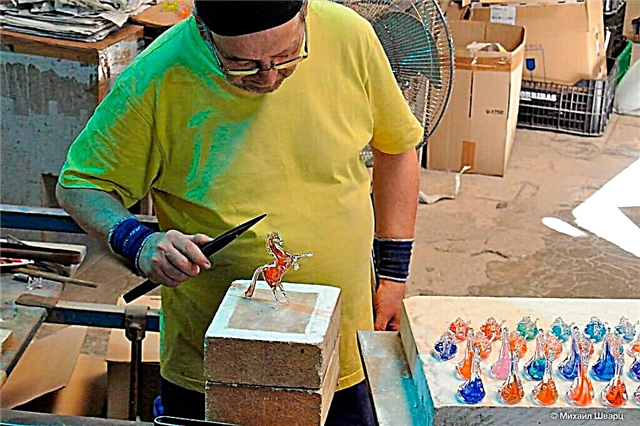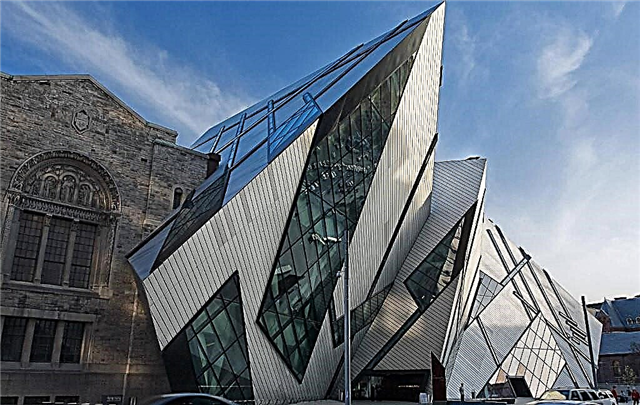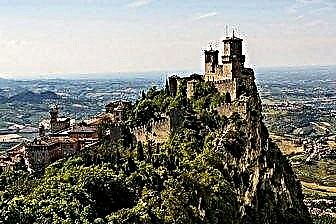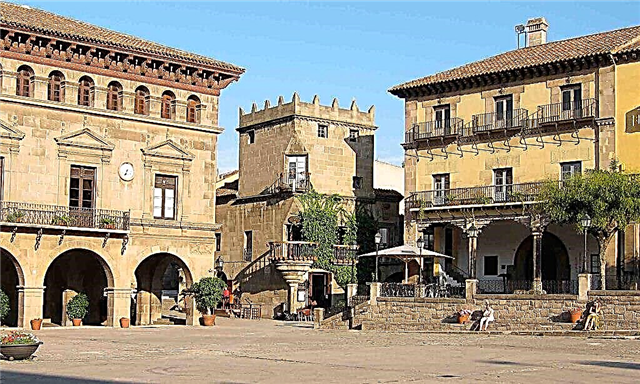One of the country's main attractions is the Spanish Village in Barcelona. It is a real complex, an open-air museum, which gives everyone the opportunity to get acquainted with the examples of architecture of the past centuries. Many thousands of tourists visit this place every year.
Why built
This question cannot be answered unequivocally. Sometimes it seems that this was done especially for the guests of the country. So that they could, as they say, "without leaving the ticket office", to see what the main attractions of Spain look like. But this village is intended not only for foreigners, but also for the Spaniards themselves. Despite the caring attitude of the people to their culture, it is sometimes difficult to preserve architectural structures, the age of which is measured in centuries. So the Spanish village and the descendants of the current inhabitants of the country will allow them to see what their great-grandfathers admired.

The Poble Espanyol open-air museum originated in the early 20th century. The reason for its creation was the preparation for the World Exhibition. Professionals - artists and architects - have traveled all over the country. Moreover, they paid attention not only to the famous palaces and temples, but even visited small villages, where houses, amazing in their color, have survived.
So the development of the project for the future Spanish village went on. Now over 40 thousand square meters have been allocated for it. On them lay layouts of 117 buildings. Some are made in full size, others are presented in miniature. Fortresses and monasteries, palaces and traditional dwellings are all made from the same materials as their prototypes.

The Spanish village was opened in 1929 on the Montjuïc mountain (although the first guests visited it back in 1927), and since then it has been a place of real pilgrimage. Needless to say - she makes a tremendous impression. And yet - what must be seen here? The very gate leading to the complex is a copy of the fortifications of the famous castle of São Vicente. The central square has gathered the features of many market squares from the Middle Ages. Now there are concerts and flamenco shows in the evenings.
The replica of the old town hall also attracts the attention of tourists. The streets of the Spanish Village are named so that tourists can easily find their way. Would you like to explore the masterpieces of Andalusia? Look for Arcos Street. The buildings of the Valencian Community are represented on Levante Street and so on.
Such zoning is very convenient for those who came to Spain for a short time, cannot visit all its ancient cities, but would like to see as much as possible.
City of artisans - what to see?
In the Spanish Village, guests come not only to inspect the skilfully executed models. This is a place where you can watch how artisans work - after all, there is a real “City of Craftsmen” here. And craftsmanship in Spanish families is passed down from generation to generation. So during the master classes, tourists can be introduced to old secrets, and, of course, they will answer all their questions.

The work of potters attracts special attention of the guests. After all, the dishes they produce - bowls, cups, jugs - are needed in every family. And rarely does anyone leave here without a souvenir. In addition, you can stand behind the potter's wheel yourself and, under the guidance of a master, make something simple yourself.
Glassblowers have a more complex craft, but they will also tell you about how beautiful products are made. Wonderful vases, various souvenirs and decorations bought here will always remind you of Spain. And, of course, you can see how weavers, tanners and artists work. It seems to many that the time machine transported the Spanish village and all its guests to the distant Middle Ages. The traditions of the craft are carefully preserved here.
Souvenir shops are also located in the houses of the Spanish village. They mainly sell gold and silver jewelry here. They are very beautiful, but those who are used to saving money can be advised to buy jewelry directly from shops in Spanish cities - there they will be cheaper.
Rest for every taste

In the Spanish countryside, no one will be bored. Those interested in history will look at the models of the buildings with great interest. Those who like to shop will dazzle at the sight of many souvenirs. Tired and want to sit and have a snack? No problem - cafes and restaurants are waiting for you here.
But young people come to the Spanish village in the late afternoon. The nightlife here is vibrant and fiery. Clubs are open, not only modern, but also national Spanish dances are danced at discos, cabaret invites fans of spectacles.
Opening hours and ticket prices
You can explore the Spanish village every day; it opens its doors at 9 am. But it closes at different times - depending on the days of the week. The open-air museum is open for the longest time on Tuesdays, Wednesdays, Thursdays and Sundays - until midnight. On Monday - until 20:00, on Friday the Spanish Village closes earlier than all - at 15:00, on Saturday - an hour later, at 16:00.
The cheapest way to purchase a service is a video guide, it costs 3 euros. Russians can listen to the story in Russian. The most convenient, and even more practical, is to buy tickets by going to the website of the Spanish Village. Those who do this will be given a 20% discount, but in this case, in case of force majeure, it will not be possible to return the tickets.
Adults can see the sights of the Spanish Village for 12 euros, for a child under 12 years old, you need to pay 7 euros. There are discounts for seniors and students, combined tickets are offered. The cheapest way to visit the village is at night, after 20 hours. It will cost 5 euros.
Another nice feature. Those who have purchased tickets can visit the Spanish Village several times during the same day. It is not forbidden to enter the complex as long as you like. But if roller skates, which are so popular with young people, are on your feet, you will not be allowed here.
Where is it located and how to get there
To explore the Spanish Village in Barcelona, you can use the metro service. The station you need is called Plaza de España, and trains on lines 1 and 3 stop there. A walk to the architectural complex from this station will take no more than a quarter of an hour. Also buses 13 and 150 go here, stop again "Plaza de España".
A visit to the Spanish village is an opportunity to get acquainted with the life and culture of the country, which have been formed over the centuries.











